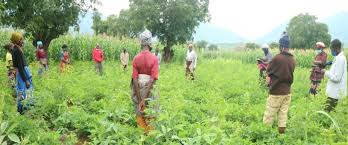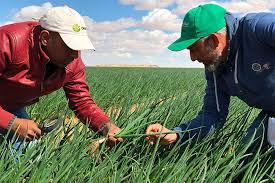The simple dictionary definition of a leader is “one who leads or goes first.” In other words, one who first perceives the group’s needs far ahead of others in its implementation.
A leader is a person who exercises the acts which facilitate group goal accomplishment. Beal et al. (1962) defined a leader as “an individual in any social situation in which his ideas and actions influence the thoughts and behaviour of others.” Reading (1963), in his Glossary of Sociological Terms, defines a leader as:
i. Person initiating interaction with other members of a group
ii. Person who initiates interaction more frequently than anyone else in a group, and
iii. Person who moves the group towards group goal
Gibb (1954) makes the following distinction between a head and a leader:
Headship or domination is maintained through an organized system and not by the spontaneous recognition by fellow group members of the individual’s contribution to the group
The group goal is chosen by the headman in line with his interest and is not internally determined by the group itself.In domination or headship, there is little or no sense of shared feeling or joint action in pursuit of the given goal.
There is in the dominance relation a wide social gap between the group members and the head who strives to maintain this social distance as an aid to his coercion of the group.
The leader’s authority is spontaneously accorded him by his fellow group members the followers whereas the authority of the head derives from some extra-group power which he has over the group members who may not be meaningfully called his followers
The business executive, heads of departments, foremen and so forth are examples of headmen. The workers under such people are not necessarily their “followers.”
They obey them on pains of punishment and accept their domination as part of their duties to the organization. However, it is possible that subordinates may come to identify qualities which they admire in their headman and accord him willing cooperation, thus giving him a leader’s status in addition.
Leadership has been defined in three fundamental ways on the basis of whose property it is:
1. Individual Property: Leadership was defined by Haiman (1957) as “the process whereby an individual directs, guides, influences or controls the thoughts, feelings or behaviours of other human beings.” The term “leader” refers to a person or actor, while “leadership” is a process.
Leadership includes the dominant personality traits of one person and receptive traits of one person and other traits of many persons in such a way that the course of events of the group is changed or determined by one person.
2. Group Property: Cartwright and Zander (1968) viewed leadership as the performance of those functions which assist the group in achieving its outcomes. It consists of group member actions which facilitate setting of group goals, moving the group towards the attainment of its goals, improving interactions among the group members, facilitating group cohesiveness, procuring resources for the group.
Pigors (1935) defined leadership as “a process of mutual stimulation, which by successful interplay of relevant individual differences, controls human energy in pursuit of a common cause.”
3. Situational Attribute: Leadership is a property of a person or group of persons in a given situation whereby, through successful utilization by their qualities, a group is moved towards the attainment of its goals.
In the three definitions above, the use of authority and influence of one actor or group of actors over another actor or group is evident. The exercise of leadership involves the use of authority and influence.
Read Also: How to Extract and Package Snail Slime (Snail filtrate) for Commercial Use
Key Related Terms in Agricultural Leadership

1. Followers: Members of a group over which leadership is exercised. Followership is the willing acceptance and fulfilment of the authority and influence of a person by another person or group. It connotes possession of qualities required for effective response and responsibility in carrying out instructions.
2. Power: The potential or manifest ability of an individual or group to modify the actions of others through force, authority, influence or control. Control involves the mobilization of power to obtain desired results. Loomis (1960) defined power as the ability to control the actions of others. Power consists of two components—authority and influence.
3. Authority is the right to control actions of others, while influence is non-authoritative control. Leadership cannot be exercised in a vacuum; power is essential.
4. Power Structure: A patterned distribution of authority and influence among various actors in a group or community. It reflects differences in the possession and utilization of resources for power.
Characteristics and Types of Leaders in Rural Agricultural Communities
Leadership requires certain characteristics: firstly on the part of the individual aspiring to lead, and secondly from the group that chooses to respond to such leadership.
Ross and Hendry (1957), after a detailed review of leadership studies, outlined eleven key characteristics a leader must possess:
1. Empathy: ability to share the feelings of others, allowing for better understanding of group needs.
2. Group Membership: must belong to the group and share its values.
3. Consideration: practical assistance to group members through explanation, instruction and support.
4. Surgency: alertness, enthusiasm, and energy; crucial for elected leaders.
5. Emotional Stability: remaining composed in times of crisis and offering constructive resolutions.
6. Desire for Recognition: willingness to assume leadership, not under compulsion.
7. Intelligence: sufficient to interact effectively without creating a gap with followers.
8. Competence: technical skill and credibility to support group goals.
9. Consistency: firmness in decisions and policies while being open to necessary changes.
10. Self-confidence: grounded in competence and communication ability.
11. Ability to Share Leadership Roles: delegation to competent subordinates to enhance effectiveness.
Ross and Hendry emphasized that the first five characteristics are more important than the next six.
Read Also: The Health Benefits of Using Accent Seasoning on your Cooking
Types of Leaders Common in Rural Communities

Nelson, Ramsey and Verner (1965) identified six types of leadership relevant in rural settings:
1. Institutional Leader: Emerges through appointment or election into a formal role. His leadership is tied to his office. Examples in rural Nigeria include school teachers, imams, pastors, health clinic officials, village council heads, and agricultural extension agents.
2. Situational Leader: Emerges in response to a crisis or social inadequacy. His leadership is welcomed due to pressing needs. Sustained leadership depends on adapting to changes. Examples include sports captains and military leaders in governance.
3. Dictatorial Leader: Evolves from institutional or situational roots but imposes decisions forcefully. Examples include business magnates or political figures dominating a local economy or structure.
4. Creative Leader: Encourages the group’s creative potential and is accepted democratically.
5. Charismatic Leader: Possesses personal qualities such as good looks, intelligence, and fearlessness that inspire followers. Historical examples include Nehru, Kennedy, Murtala Muhammad, Ahmadu Bello, and Obafemi Awolowo.
6. Traditional Hereditary Leader: Ascends to leadership by birth and custom. Authority is ascribed rather than achieved. Examples include Emirs (North), Obas (Southwest), and Obis (Southeast) in Nigeria.
Do you have any questions, suggestions, or contributions? If so, please feel free to use the comment box below to share your thoughts. We also encourage you to kindly share this information with others who might benefit from it. Since we can’t reach everyone at once, we truly appreciate your help in spreading the word. Thank you so much for your support and for sharing!

